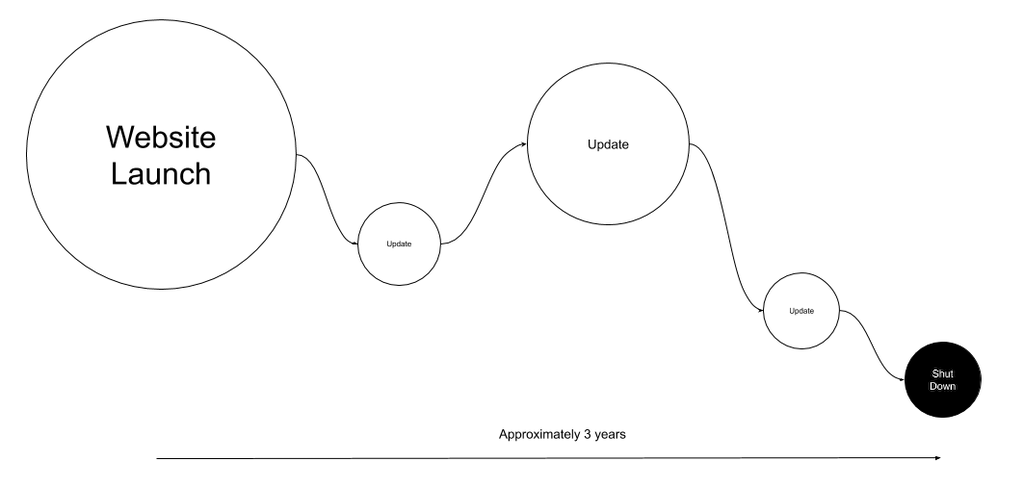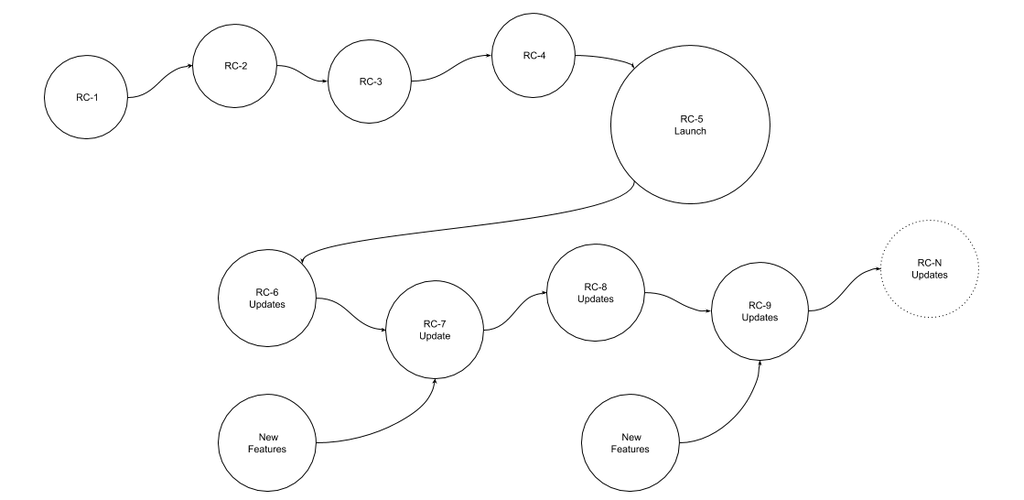Why Platform As a Service costs more than a website
Consultants, NGOs, and entrepreneurs who fundraise to launch a Platform as Service (PAAS) assume that once they invest all their funds in building something new and launching their product, they can sit back and enjoy their idea’s realization. Except that now they have adopted a new child, they are surprised to find out about the upcoming release cycles that cost many times as much as the cost of the first launch. This miscalculation happens because they are still in the mindset of website development life cycles.
Most organizations and small businesses can afford to launch reasonably modern websites but, only high-revenue businesses or well-funded startups attempt to build software as a service platform. That has to do with the difference between software and a website’s lifecycles.
A website’s lifecycle
When you launch a website, you invest most of your resources in the initial launch. If there is anything left of the budget, the website’s customized pieces are later updated, perhaps once or twice a year. In other words, the life cycle of your website is similar to the following figure:

After 3 or 4 years, you save up enough funds to replace your website with an entirely new and improved version.
A software application’s lifecycle
A Platform as a Service or PaaS is made of a number of software applications. The life cycle of software is similar to Figure 2. Most software developers build software in a series of release cycles. They may go through 3 to 5 release cycles to launch an application, and from that point continue maintaining, updating, and scaling up the software system for a large number of users.

Unless the funding dries out or users stop using the platform, new release cycles are what keep the platform healthy and thriving. That’s how the application’s usability and quality improve because every new release cycle contains improvements and optimization based on user feedback. They also provide security and bug fixes. Our computers, laptops, smartphones, and tablets notify us whenever new updates are available for operating systems and apps.
Most apps require a back-end in the cloud to exchange data with, and these cloud apps, one would hope, are updated regularly to ensure better security and performance, and they offer new features, too.
You may argue that most websites are now using content management software with sophisticated features and payment integrations. How come those websites don’t require as much work to maintain and upgrade as the software does?
The answer is that they do because content Management software companies go through continuous release cycles, and they have a source of revenue and a knowledgeable workforce to maintain their software. A web design and development agency, on the other hand, implements custom templates and plugins to existing CMS software to develop websites, and those custom bits that you are paying for don’t require as much maintenance as the underlying infrastructure does.
Avoid surprises early on
Forthcoming release cycles take up labour and knowledge resources, consequently maintaining software costs more than maintaining a website for organizations. For example, if a software is updated quarterly, each quarter could easily cost as much as the initial product launch. If you add new features to your software, you are looking at additional development and maintenance costs added to your existing budget.
More on Platform as a Service:
Price plans for a newly launched SAAS platform
Why do we use different types of databases for an online service
The shift from building products to platforms
Photo by Sarah Pflug from Burst





